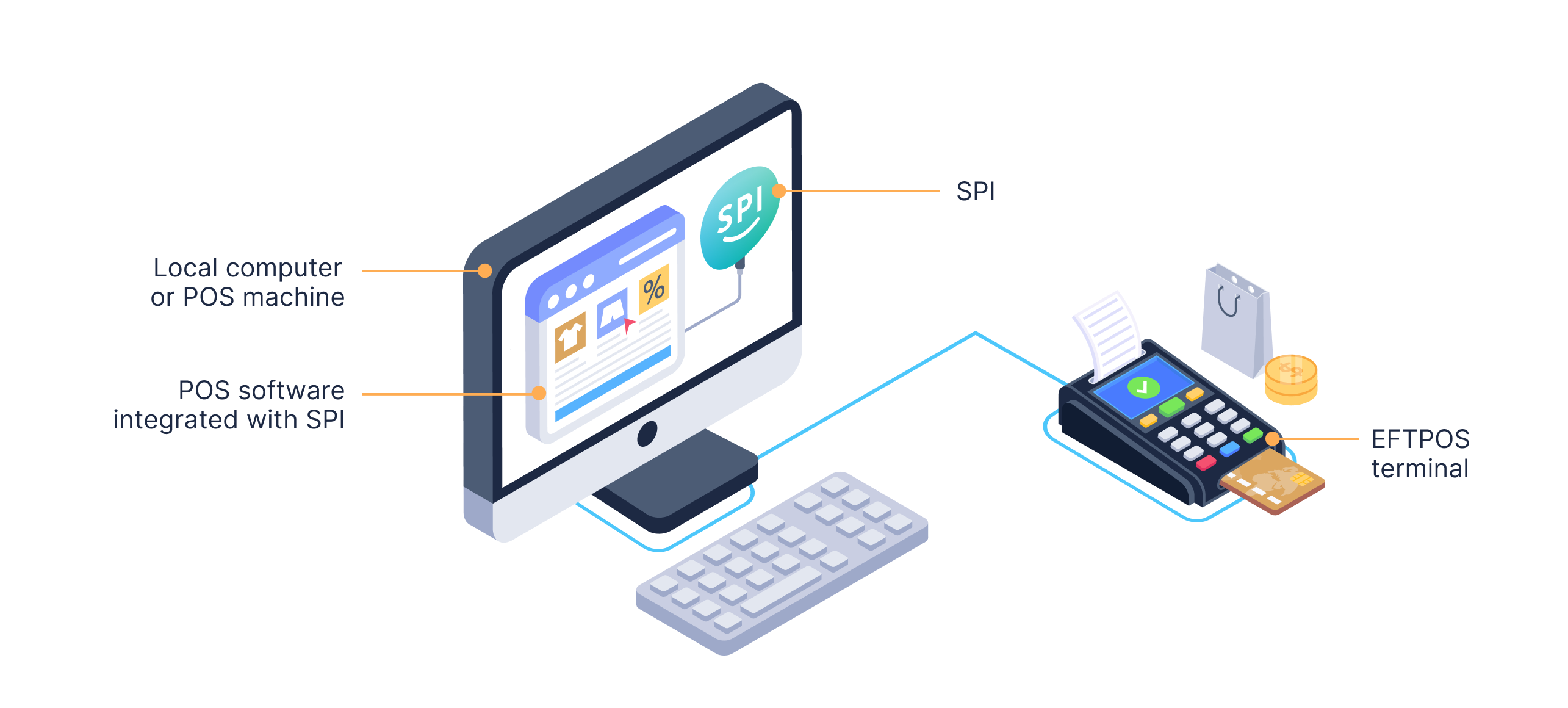Overview
In these guides, you will learn about the SPI library and how to integrate it with your Point of Sale (POS) machine.

Introduction
SPI is a library that enables your POS to make in-store payments and other transactions. It is a bank-grade solution that seamlessly connects your POS with EFTPOS terminals.
SPI is built to be …
- Resilient — it can be relied upon during a network outage because it can be used while disconnected from the EFTPOS terminal.
- Feature-rich — it supports advanced transaction types and features.
- In your control — it can be used to build the unique features that you require and can integrate with your existing user interface (UI).
Looking for Spice?If you're instead using our Spice application, see the Spice guides
Try the demo
See the capabilities of SPI by trying a live demo of a POS that uses this library. You can pair it with an EFTPOS terminal, make purchases, and more.
Try the EspressoPOS demo and pair it with the Gecko Bank terminal.
How to integrate SPI
The following guides will walk you through the steps to develop your SPI integration and get it certified.
- Getting started
- Install the SPI library
- Note the requirements for your integration
- Develop the SPI integration
- Develop any additional features for your integration such as MOTO transactions
- Test your integration and get it certified by our team (or recertified)
Also, here are some resources to help you.
About usAt mx51, we provide Payments as a Service (PaaS) and a range of complementary services to our partners, empowering them to connect with merchants and their customers. Learn more about us
Updated about 1 month ago